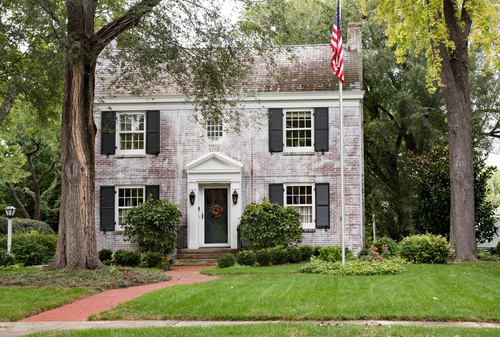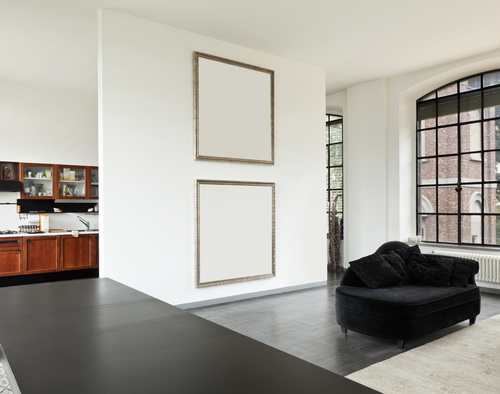
Well…they’re back! After years of being in the Agreeable Gray dead zone Sybil and I are happy to see homes brightening up, for both interior painting, exterior painting, and cabinet painting with the pivot to whites.
White paints have gained immense popularity in interior design, celebrated for their clean, minimalist appeal. One major advantage is the ability of white to make spaces appear larger, brighter, and more open. It reflects light well, giving rooms an airy feel. White also provides a versatile backdrop, allowing for flexibility in décor choices and easy coordination with other colors, patterns, or materials. This means you can go bold with accents! Other considerations include the undertones of white (cool vs. warm), the effect of natural and artificial lighting on its appearance, and the room’s purpose. In a southfacing room, for instance, cool whites can help balance the warmth of sunlight, while warmer whites can prevent a room from feeling too cold. Its neutral tone allows other elements of the room, such as furniture, artwork, or accent pieces, to stand out without clashing with bold colors. The reflective nature of white paint helps distribute light more effectively, making small or dim rooms feel more open and inviting. One of the most appealing aspects of using white is the perception of cleanliness perfect for kitchens and bathrooms where a more sterile and hygienic appearance is desired.
As far as exterior painting goes, painting tired brick with a warm white can create a beautiful transformation that may help to lift your mood when you pull in the driveway after that treacherous work commute. Paired with black or your favorite dark colors as accents on your exterior trim this combo is modern, clean and chic. We suggest a low lustre or satin finish for your exteriors to provide durability, ease of washing, mold and mildew resistance and UV protection.

But let’s hold on for a minute! White paints in all its many hues and sheens has its drawbacks. It shows dirt, scuffs, and stains more easily than darker shades, requiring frequent cleaning or touch-ups, particularly in high-traffic areas. Additionally, white can sometimes feel sterile or cold if not balanced with warmer elements like wood or textiles so you want to consider the effect you desire when choosing whites in certain spaces. If not balanced with the right textures, furnishings, or lighting, a room can feel impersonal or bland. And while there are many different shades of white, they can be hard to differentiate and may not provide the dynamic energy some rooms require. A warm white with yellow or beige undertones can make a room feel cozier, while a cool white with blue or gray undertones can provide a crisp, modern look. Lighting in a room can greatly affect how the paint appears on the walls, so it's important to test a few shades in different lighting conditions. Also, too much white can create a sense of isolation or emptiness, while small doses paired with complementary hues can evoke calmness and serenity. Another very important consideration is cost. Why do you ask? White paints generally require additional coats for hiding and coverage purposes, especially when going over that Agreeable Gray or darker colors especially reds so there will probably be more labor and material costs involved.
This is just a general overview of points to consider when choosing a white or multiple whites for your paint project. If you are planning to do it yourself, always remember that for any paint project 80% of the work is in the prep. Maybe next time we will tackle some prep pointers and general guidelines to make your life better!
Sybil is always available for color consultation, and we are always here for free estimates. So if you are in the Wilmington, NC area or a fifty mile radius we will be glad to take a look! Please check out our contacts and give us a call.
Too much white can create a sense of isolation or emptiness, while small doses paired with complementary hues can evoke calmness and serenity.
